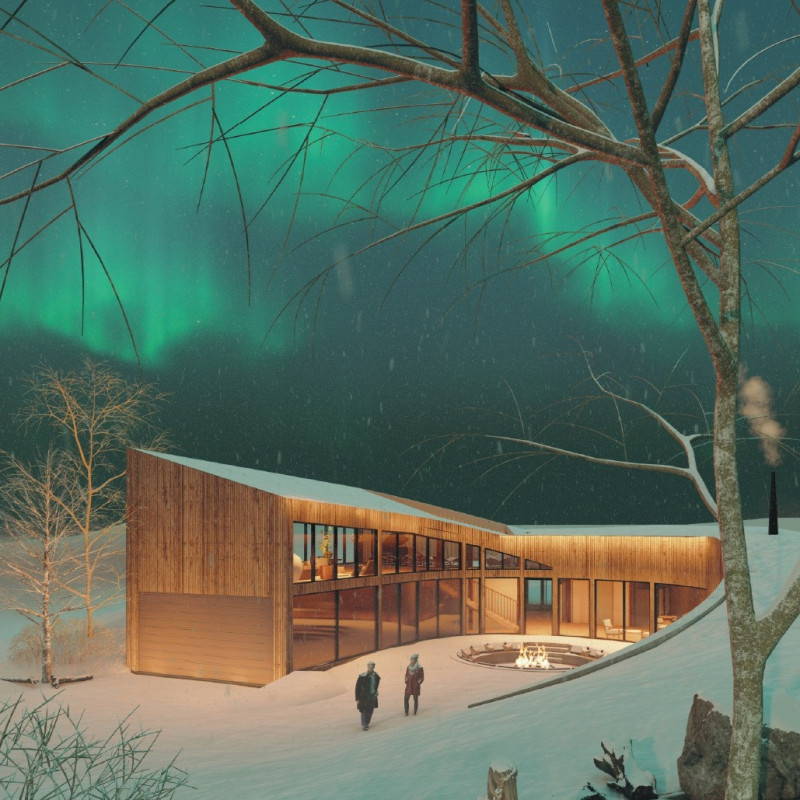5 key facts about this project
At its core, the architecture conveys a sense of openness and accessibility. The layout is carefully organized to promote interaction while also providing areas for privacy and reflection. Key spaces within the structure include communal areas that encourage socialization, alongside private zones tailored for individual tasks or quiet contemplation. This duality allows the building to cater to a diverse range of activities, from collaborative work to personal reflection.
One notable aspect of the design is its emphasis on light and space. Large windows and strategically placed openings facilitate natural ventilation and daylight penetration, enhancing the overall user experience. This design approach not only promotes energy efficiency but also fosters a connection between the interior spaces and the outdoor environment. The thoughtful arrangement of both visual and physical connections to the surroundings is a testament to the project's sensitivity to its setting.
Materiality plays a crucial role in the architectural expression of the project. A combination of concrete, glass, steel, wood, and brick has been employed to create a cohesive aesthetic that is both modern and approachable. Concrete is utilized for its durability and structural capabilities, providing a solid foundation for the building. Meanwhile, glass is strategically positioned to maximize views and light while offering a sense of transparency that blurs the line between indoor and outdoor spaces. Steel elements contribute to the structural integrity of the project, allowing for expansive open areas without compromising safety. The incorporation of wood adds warmth and tactile quality to the interiors, inviting occupants to engage with their environment comfortably. Brick, often reflective of local construction practices, ties the building to its context and offers a sense of continuity with the surrounding architecture.
The landscape design complements the architecture, emphasizing the importance of integrating natural elements within the built environment. Green spaces, terraces, and landscaped areas not only enhance the visual appeal of the project but also support biodiversity and ecological health. By incorporating native plant species, the project aims to reduce maintenance needs while fostering a sense of place that resonates with the local community. This intentional landscaping approach provides users with outdoor spaces that can be utilized for relaxation, social gatherings, or educational purposes.
Unique design approaches inform every aspect of the project, reflecting an awareness of both user needs and environmental considerations. Sustainability is woven into the framework, with features such as rainwater harvesting systems and solar panels designed to minimize the building's ecological footprint. The careful choice of locations for these systems ensures that functional aspects of the design do not detract from the overall aesthetic coherence. Furthermore, innovative techniques have been employed to ensure the building is adaptable to future needs, allowing it to evolve along with the community it serves.
Ultimately, this architectural project is characterized by its commitment to thoughtful design principles rooted in practicality and local context. By prioritizing user experience, environmental sustainability, and aesthetic sensitivity, the project not only meets functional requirements but also contributes positively to the surrounding area. For those eager to delve deeper into the intricacies of this project, exploring the architectural plans, sections, designs, and ideas will provide further insight into the meticulous thought processes that shaped its realization. The resulting structure stands as a meaningful addition to the architectural landscape, illustrating how thoughtful design can enhance everyday life.























